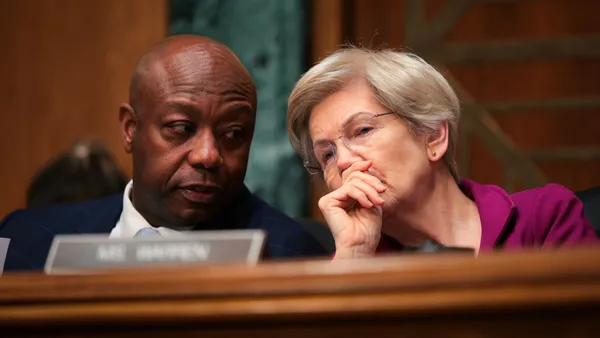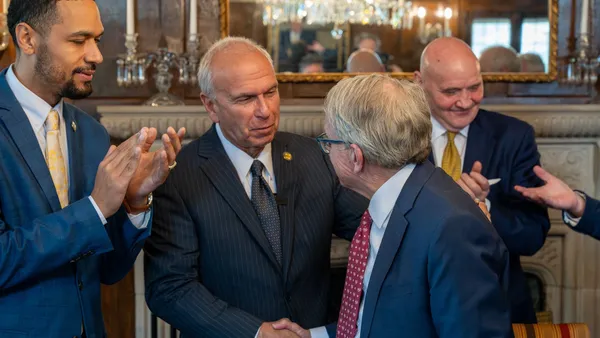More than 360 colleges have agreed to a set of standards to use in sending out financial aid offers, a step to demystifying an often confusing process for students and families.
The commitment, announced Tuesday, was devised by the College Cost Transparency Initiative, a task force created last year by 10 higher education associations including the American Council on Education. The coalition has been attempting to influence colleges’ financial aid practices, urging them to ensure their offers are easily understood.
Overly complex and opaque financial aid letters are a perennial issue in higher education. Without clear, standardized information, students and families often have trouble comparing costs among institutions and determining how much they’ll pay for college.
A U.S. Government Accountability Office report exposed the breadth of this problem last year. The GAO, a government watchdog, found 91% of colleges don’t include or lowball their net price — how much students pay after factoring in grants and scholarships — in their financial aid offers.
Institutions of all types, ranging from community colleges to public networks like the University System of Georgia, are newly promising to simplify their financial aid offers and estimate students’ net price. Some colleges are taking these steps immediately; others are waiting until Nov. 1 or later.
They promised to describe all types of aid in plain language, so, for instance, students don’t confuse loans and grants. And they’ll prominently display this information on offers, the colleges said.
“Students and families need transparency, consistency, and clarity when colleges and universities communicate their student financial aid offers so that they are able to make informed decisions about enrolling in and affording higher education,” Education Secretary Miguel Cardona said in a statement Tuesday. “Unfortunately, financial aid offers are often confusing and, in some cases, misleading.”
Last year’s GAO report found 41% of colleges didn’t include anything about net price in their offers. The agency had studied more than 500 financial aid offers at 176 colleges.
None of the institutions completely adhered to a list of 10 practices the federal government developed in 2019 for formulating financial aid offers, the GAO found. Those included itemizing costs and highlighting crucial parts of an offer, such as if a student needs to maintain a certain GPA for a scholarship.
The report also urged Congress to develop legislation to help remedy the inconsistencies. Though some lawmakers have introduced bills, they’ve spun their wheels on the issue.
A bipartisan legislative package put forth again this year would create a federal net price calculator, as well as a universal financial aid offer form.
Republican Rep. Virginia Foxx, who chairs the House Committee on Education and the Workforce, also earlier this year reintroduced the College Cost Transparency and Student Protection Act, which would standardize aid letters.
Foxx said in a statement the College Cost Transparency Initiative “is a big step in the right direction.”
“Getting the federal student loan program in check requires action from both lawmakers and postsecondary education institutions, and I’m glad to see we’re working together towards the same goal of greater transparency,” Foxx said.
Correction: An earlier version of this story misstated the language in the pledge. The story has been updated.














